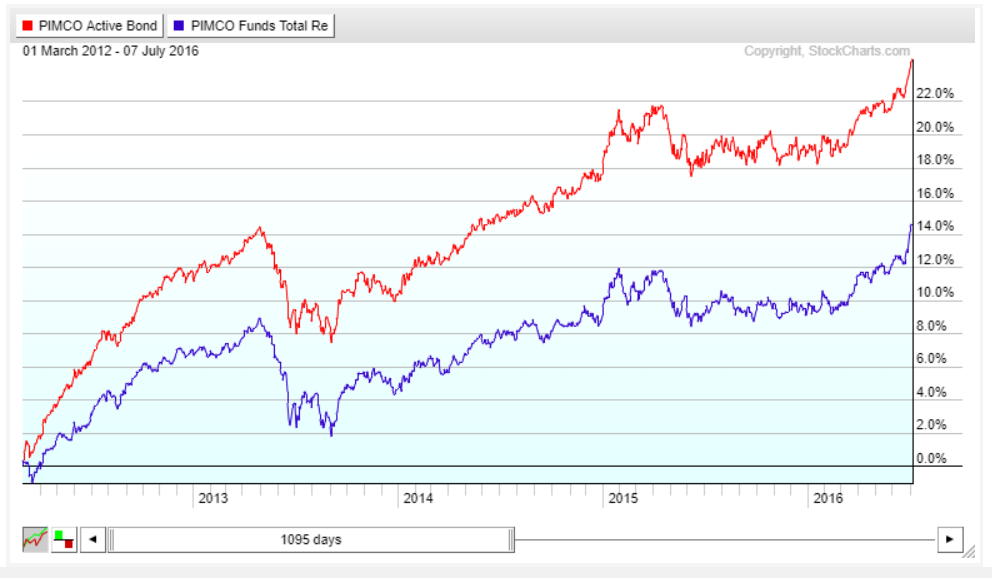Passive and index-tracking exchange-traded funds (ETFs) have long been touted as better vehicles than mutual funds for years. Thanks to various tax breaks and lower expenses/operational costs, passive ETFs can normally trump actively managed mutual funds – and it looks like actively managed ETFs can do the same thing.
Over the last few years, fund managers have launched ETF clones of their popular mutual fund strategies, often run by the same fund manager. Looking at the data, these active ETFs come out on top in a big way. In some instances, the outperformance is startling when comparing the two fund types.
For investors, the data and outperformance underscores how ETFs could be the best fund vehicle for their portfolios over the long haul.
See our Active ETFs Channel to learn more about this investment vehicle and its suitability for your portfolio.
Copycat Funds
The number of active ETFs has exploded in recent years. In fact, the number of active ETFs has doubled in the last two years, and assets under management in such funds have more than tripled. Of all the ETFs that have launched both last year and this year, more than 60% of them have been active ETFs.
Plenty of those funds have been so-called copycat ETFs launched by traditional mutual fund managers. For example, asset manager T. Rowe Price recently launched the T. Rowe Price Dividend Growth ETF (TDVG). The ETF, managed by Thomas J. Huber, focuses on stocks that have increased – or are expected to increase – their dividends over the long haul. Huber also manages the $20 billion T. Rowe Price Dividend Growth Mutual Fund (PRDGX ). PRDGX’s fund’s focus is exactly the same. Moreover, the top ten holdings of TDVG and PRDGX are mirror images of one another.
T. Rowe Price also launched the T. Rowe Price Equity Income ETF (TEQI ) and T. Rowe Price Blue Chip Growth ETF (TCHP). Run by the same managers as their mutual fund counterparts, they feature the same strategies and holdings.
And T. Rowe Price isn’t alone in their launches. Popular mutual fund houses Fidelity, Franklin Templeton, American Century and Capital Group/American Funds have all launched new active ETFs that are clones or near-clones of their mutual fund counterparts.
BOND Is the Model for Success
Despite the surge in copycat funds, the technique is not necessarily new. While he’s been retired for a few years now, Bill Gross was once known as the “bond king” and ran one of the largest mutual funds in the world – the PIMCO Total Return (PTTRX ). Seeing the long-term success of ETFs before it was really known, PIMCO and Gross launched the PIMCO Active Bond ETF (BOND), which was also known as the PIMCO Total Return ETF. Gross ran the ETF and mutual fund identically.
But there were some interesting pieces to that puzzle. BOND managed to outperform PTTRX and its various share classes in a big way. You can see by the chart below of BOND’s inception to the time Bill Gross left PIMCO and the management of the fund just how much the ETF outperformed the mutual fund.

Source: StockCharts.com
The reasons for that outperformance were vast.
For starters, the smaller size of the ETF meant that Gross could be nimbler with the fund’s assets. At the time, Total Return had more than $140 billion in AUM. In order to move the needle, Gross needed to take big bets, and when you’re that big, the sheer size limits what you can invest in it. Asset bloat is a huge deal for large mutual funds, resulting in closet index trackers because of the size.
Secondly, cash drag was eliminated. One of the issues with mutual funds is that asset managers can’t be fully invested. They need to always have a layer of cash in their funds to support investor redemptions or sales. If they don’t, they could be forced to sell assets before they want to. As we all know from the tiny interest our savings accounts are getting, cash pays nothing and creates a “drag” on a fund’s returns. ETFs avoid this due to their creation/redemption mechanism. Secondary investors trade ETFs without impacting the underlying assets of the fund. Authorized participants (APs) are able to trade shares of the ETF for its underlying holdings directly, and vice versa. As a result, there is no cash drag on an ETF unless the manager decides that cash should be one of its holdings.
Finally, expenses are a huge issue overall. The various PIMCO Total Return mutual fund shares classes came with sales loads and expenses as high as 0.85%. Even the no-load version of the fund still charged 0.75% in expenses, in contrast to BOND’s low expense ratio of 0.45%. Overtime, the lower expense ratio makes a difference.
In the end, BOND was able to crush the mutual fund.
Don’t forget to check our Portfolio Management Channel to learn about different ways to manage your portfolio.
Same Thing Today
It looks like history is repeating itself. All three of the T. Rowe Price ETFs, since their inception, have slightly outperformed their mutual fund counterparts. The same could be said for other big copycat active ETFs like the Fidelity Magellan ETF (FMAG).
The reasons are similar to BOND’s success: lower expenses at the ETF, no cash drag and, more importantly, no asset bloat. Nearly all of the copycat ETFs launched in recent months have been clones of very large equity funds. Magellan has nearly $30 billion in assets alone. While top ten holdings are the same, many of these ETFs feature different bottom holdings. Again, managers can be nimbler.
Overtime, these differences are likely to allow the copycat active ETFs to outperform their mutual fund counterparts and compound better long-term results. All in all, history is repeating itself and making a serious case for active ETFs in your portfolio.
Use the Dividend Screener to find high-quality dividend stocks.





